 Your new post is loading...
 Your new post is loading...

|
Scooped by
Giuseppe Fattori
December 21, 2015 5:10 PM
|

|
Scooped by
Giuseppe Fattori
December 21, 2015 5:13 PM
|
A partire dall'estate 2015 gli operatori della Prevenzione sono stati coinvolti nella progettazione di dettaglio delle singole azioni. Il piano, lo ricordiamo, si delina su 10 programmi: quattro nell'ambito di "Guadagnare Salute Piemonte", distinti per setting: il mondo della scuola, comunità e ambienti di vita, comunità e ambienti di lavoro e setting sanitario; cinque inerenti alle azioni e tematiche più "classiche" di suddivisione dei programmi di prevenzione. Chi vorrà approfondire quel che viene sinteticamente spiegato nel documento potrà accedere ai contenuti di dettaglio con un click: ogni link è individuato da una cornice. Tutti i documenti sono stati reperiti in siti ufficiali e sono pubblici, scaricabili da chiunque

|
Scooped by
Giuseppe Fattori
December 21, 2015 5:10 PM
|
L’Associazione MKTS è partner di EUFASD (European Fetal Alcohol Spetcrum Disorders Alliance) nella campagna TYTD (Too Young To Drink), con l’obiettivo di sensibilizzare alla Sindrome Feto Alcolica.
Background: Despite reported benefits, many women do not attend breast cancer support groups. Abundant online resources for support exist, but information regarding the effectiveness of participation is lacking. We report the results of a Twitter breast cancer support community participant survey. Objective: The aim was to determine the effectiveness of social media as a tool for breast cancer patient education and decreasing anxiety. Methods: The Breast Cancer Social Media Twitter support community (#BCSM) began in July 2011. Institutional review board approval with a waiver of informed consent was obtained for a deidentified survey that was posted for 2 weeks on Twitter and on the #BCSM blog and Facebook page. Results: There were 206 respondents to the survey. In all, 92.7% (191/206) were female. Respondents reported increased knowledge about breast cancer in the following domains: overall knowledge (80.9%, 153/189), survivorship (85.7%, 162/189), metastatic breast cancer (79.4%, 150/189), cancer types and biology (70.9%, 134/189), clinical trials and research (66.1%, 125/189), treatment options (55.6%, 105/189), breast imaging (56.6%, 107/189), genetic testing and risk assessment (53.9%, 102/189), and radiotherapy (43.4%, 82/189). Participation led 31.2% (59/189) to seek a second opinion or bring additional information to the attention of their treatment team and 71.9% (136/189) reported plans to increase their outreach and advocacy efforts as a result of participation. Levels of reported anxiety before and after participation were analyzed: 29 of 43 (67%) patients who initially reported “high or extreme” anxiety reported “low or no” anxiety after participation (P<.001). Also, no patients initially reporting low or no anxiety before participation reported an increase to high or extreme anxiety after participation. Conclusions: This study demonstrates that breast cancer patients’ perceived knowledge increases and their anxiety decreases by participation in a Twitter social media support group.
The popularity of social media sites and the ease at which its data is available means these platforms are increasingly becoming primary sources for social research. Wasim Ahmedpresents a quick look at some of the tools available to social scientists for analysing social media data and also reflects on the limitations of the platforms and the methods used for this type of research. I have a social media research blog where I find and write about tools that can be used to capture and analyse data from social media platforms. My PhD looks at Twitter data for health, such as the Ebola outbreak in West Africa. I am increasingly asked why I am looking at Twitter, and what tools and methods there are of capturing and analysing data from other platforms such as Facebook, or even less traditional platforms such as Amazon book reviews.
Via Giuseppe Fattori

|
Rescooped by
Giuseppe Fattori
from Co-creation in health
October 19, 2015 5:47 PM
|
WHAT ARE PHYSICIAN RATING SYSTEMS?Online scoring systems are available that attempt to rate clinicians’ expertise and outcomes. These include Medicare’s Physician Compare (www.medicare.gov/physiciancompare/search.html), Consumers’ Checkbook’s Surgeon Ratings (www.checkbook.org/surgeonratings), and Propublica’s Surgeon Scorecard (projects.propublica.org/surgeons). Physician Compare has basic information about a physician’s qualifications and some clinical outcomes information (like how many patients in a clinician’s practice have good diabetes control). Consumers’ Checkbook and ProPublica attempt to display how often patients have complications after their operations.

|
Rescooped by
Giuseppe Fattori
from Co-creation in health
October 19, 2015 5:47 PM
|
The information age is drowning us in a deluge of data, and it is becoming increasingly difficult to separate facts from pseudo-facts, objective from biased sources, and at the same time, we’re all being asked to do more at home and at work. Daniel Levitin reviews the cognitive neuroscience of attention and memory, presents the differences between mind-wandering mode and task-focused mode and offers advice for how to boost creativity and limit exhausting brain-shifting distractions.

|
Scooped by
Giuseppe Fattori
October 19, 2015 5:46 PM
|

|
Rescooped by
Giuseppe Fattori
from Co-creation in health
October 19, 2015 5:46 PM
|
This article provides an analysis of the relationship between annual advertising expenditures and sales, using a time series regression procedure, for beer, wine, and liquor sold in the United States from 1971 to 2012. Information from these four decades provides a comprehensive analysis of the relationships of numerous variables with aggregate alcohol category sales. Even though per capita alcohol consumption has not changed much throughout this period, alcohol advertising media expenditures for all alcohol beverages have increased almost 400% since 1971. This study has provided evidence of consumption changes across categories of alcohol beverages over the past 40-plus years with the preponderance of those changes significantly correlated to fluctuations in demography, taxation and income levels – not advertising.
Everyday social media posts may provide insights about health, health outcomes and the quality of care at hospitals, according to two new studies published in the journal BMJ Quality & Safety. The first study, by a research team at Boston Children's Hospital, examined whether the information that patients post on Twitter might help measure patient-perceived quality of care in U.S. hospitals. Researchers, led by Jared Hawkins of Boston Children's Hospital's Computational Health Informatics Program and Boston Children's Chief Innovation Officer John Brownstein, Ph.D., wanted to see if they could use Twitter to supplement survey-based methods that measure patient experienceand quality in an inpatient setting.
"The main problems with measuring patient experience by survey are the small numbers of people who respond to surveys and the lag time," says Hawkins in a study announcement emailed to FierceHealthcare. "It can take up to two years before survey data are released to the public."

|
Scooped by
Giuseppe Fattori
October 19, 2015 5:45 PM
|

|
Scooped by
Giuseppe Fattori
September 25, 2015 5:22 PM
|
Le nuove tecnologie come ci stanno cambiando? Come realizzare comunicazione efficace su temi di salute? Come intercettare il pubblico? E’ possibile utilizzare questi ambienti per potenziare gli interventi socio-sanitari? Esistono le dipendenze da internet? Come prevenire? Come curare? Quali interventi possibili?

|
Scooped by
Giuseppe Fattori
September 25, 2015 5:22 PM
|
Il fast food e la distribuzione automatica del cibo contribuiscono a soddisfare le esigenze dei nuovi ritmi di vita. Come sviluppare qualità ed efficienza? Le tecnologie della distribuzione automatica dei cibi e delle bevande garantiscono un servizio efficiente in tempi e luoghi difficilmente gestibili con altri mezzi. Come assicurare qualità nutrizionali, ma anche la salubrità, la genuinità degli alimenti e la tutela dell’ambiente, secondo i principi di “efficace utilizzo delle risorse alimentari” indicati dalle strategie della Comunità Europea.
|
Dr Ekant Veer, Associate Professor of Marketing, School of Business and Economics In all likelihood, even if everyone knew what would guarantee a healthy life, would it really make any difference? There are many things that we know are extremely unhealthy, but still continue in our society: tobacco smokers likely know it is harmful to their health, but they continue to smoke, and binge drinkers probably know they will have a hangover in the morning, but they continue to drink excessively. Knowing something is healthy or unhealthy is only one part of the equation.
In May 2012, the US Preventive Services Task Force (USPSTF) recommended against prostate-specific antigen (PSA)–based screening for prostate cancer, giving it a grade D and concluding, “there is moderate certainty that the benefits of PSA-based screening from prostate cancer do not outweigh the harms.”1Rather than put an end to this controversy over screening, this recommendation further fueled a contentious ongoing debate.
We are a visual culture, so strong design and visual storytelling are key creative outlets to enhance content marketing.
Via Kamal Bennani, Giuseppe Fattori
It’s no doubt that patient engagement is among the top healthcare priorities. For medical providers, it’s imperative to interact with their patients and empower them with the right information at the right time. A new concept named Internet of Things (IoT) has revolutionized the world with its vast capabilities of connecting the people and things with each other, and healthcare industry is no exception. According to IDC Health Insights, 35.1% of healthcare organizations have already implemented IoT either in their pilot or production stages. This is because IoT allows medical providers to give personalized treatment to their patients and enhance their overall experience by proactively engaging with them. Although healthcare industry is still in the process of adapting to new IoT technologies, yet its contribution towards healthcare sector is undeniably invaluable. Although IoT brings in its own set of challenges, yet its contribution towards patient engagement is unarguable. According to ABI Research, the sale of wearable medical devices will see an influx in the future and is expected to reach more than 100 million devices annually. Another report by IMS Research cites that the wearable devices or the devices that are close to the body produce more realistic results. This indicates towards the possibility of seeing more faces of IoT based technologies in future. In order to use it in the most effective way, the healthcare firms now need to understand how they can truly harness its power in the interests of their patients.

|
Rescooped by
Giuseppe Fattori
from Co-creation in health
October 19, 2015 5:47 PM
|
In 2013, Angelina Jolie's double mastectomy and publication of her personal treatment choice for BRCA1 positivity generated considerable media attention. To the authors’ knowledge, the current study is the first prospective survey conducted among the general public to measure a quantifiable media-related effect on public awareness.
CONCLUSIONS
To the best of the authors’ knowledge, this is the first prospective study to demonstrate a statistically significant impact of a celebrity announcement on public awareness regarding breast cancer treatment. The results underscore the importance of a media-related impact for professionals in the health care sector, which can serve as a tipping point for raising awareness and improving knowledge concerning a specific disease among the general public. Cancer 2015. © 2015 American Cancer Society.

|
Scooped by
Giuseppe Fattori
October 19, 2015 5:47 PM
|

|
Scooped by
Giuseppe Fattori
October 19, 2015 5:46 PM
|
Piercesare Rivoltella a "Teniamoci per mouse 2012
L'intervento dal titolo "Insegnare e apprendere per EAS (Episodi di Apprendimento Situato).

|
Rescooped by
Giuseppe Fattori
from Co-creation in health
October 19, 2015 5:46 PM
|
Successful organisational change has a rhythm and a pace that needs to be embraced. Instead of fighting change and forcing it into a corner, learn to harness the beauty and rhythm of organisational change. In this podcast, Gillian Klette, a very experienced Organisational Change Manager,shares her expertise on how to embrace the rhythm and motion of successful organisational change. Key Points Raised in this Podcast: - Organisations have a rhythm and heartbeat that is unique
- Project Managers need to spend quality time with the customer/operational teams to understand the rhythm
- Organisational Change Managers support Project Managers to understand the rhythm of the teams
- Learn to embrace the rhythm to bring about successful organisational change
- How to make organisational change joyful

|
Rescooped by
Giuseppe Fattori
from Social Media and Healthcare
October 19, 2015 5:45 PM
|
A Brookings Institute economics expert and a patient advocate argued with each other last week during a live Google chat. They disagreed about the voices of patients, and how much these voices should count. Their debate is just one of hundreds going on as to how and where and when to register patient feedback in health care. The two of them had spent almost a week in barbed exchanges on Twitter, but were relatively kind to each other at the live chat.
Via Plus91

|
Rescooped by
Giuseppe Fattori
from Social Media and Healthcare
October 19, 2015 5:45 PM
|
Social media has penetrated just about every corner of society. People use social media to post things about their daily lives, share photos, and to keep in touch with happenings of other people and businesses, including medical practices. Twitter is a social media brand that features short updates of 140 characters or less. Pictures and video can also be featured through links. Twitter created the hashtags that people often see everywhere now, including on other social media sites like Facebook and even on television shows and advertisements. Hashtags link posts so that people can see all the posts under the same hashtag together.
Via Plus91

|
Rescooped by
Giuseppe Fattori
from Social Media and Healthcare
October 19, 2015 5:44 PM
|
Toronto: Using Twitter can help physicians answer health queries from their patients in a better way, say researchers from University of British Columbia (UBC).
The study found that more and more health care professionals are embracing social media. This challenges common opinion that physicians are reluctant to jump on the social media bandwagon.
"Many people go online for health information but little research has been done on who is participating in these discussions or what is being shared," said Julie Robillard, neurology professor at UBC's national core for neuroethics.
Via Plus91

|
Scooped by
Giuseppe Fattori
September 25, 2015 5:22 PM
|
|

 Your new post is loading...
Your new post is loading...
 Your new post is loading...
Your new post is loading...





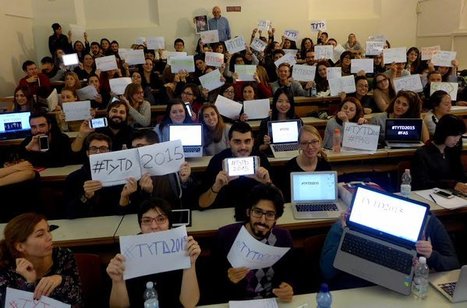
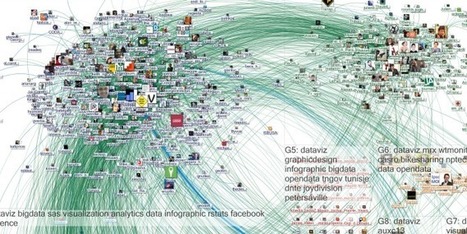
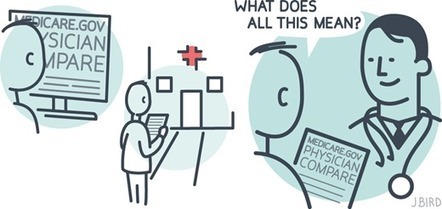

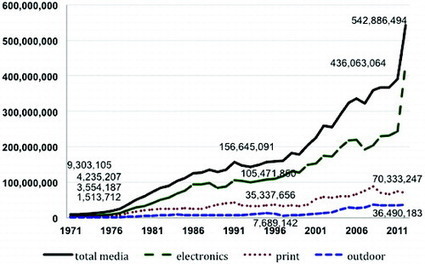

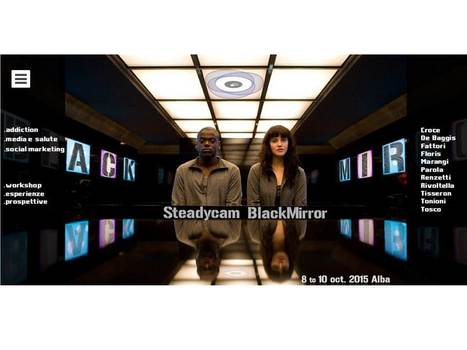

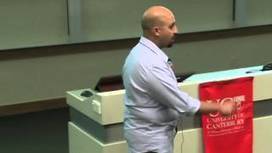


![IoT and Patient Engagement: How IoT is Defining Three Es of Engagement [Infographic] | Italian Social Marketing Association - Newsletter 226 | Scoop.it](https://img.scoop.it/6UQrYhYFAr6HgsafemeF9jl72eJkfbmt4t8yenImKBVvK0kTmF0xjctABnaLJIm9)










